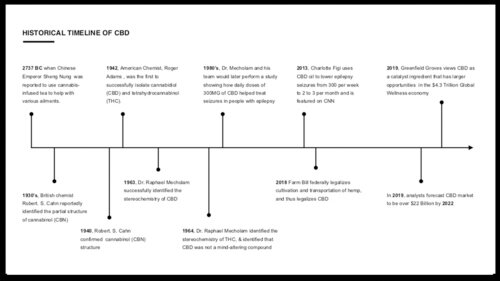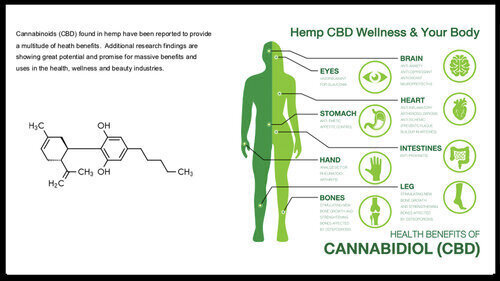We believe in the power of mother nature. We take great care in nurturing our land so that everything we grow is treated as the earth would have intended; using all natural components in our soils along with utilizing seasonal climate and weather conditions to grow thriving, robust crops. We believe that taking the time to properly nurture and pay attention to our stalks, we can work with the plants themselves to continually breed cultivars that are high in medicinal benefits. By taking good care in our land, we are also committed to growing a variety of beneficial herbs that sustain the farm, employ even more farmers, and are used in our formulations. Thus, we really believe in a holistic approach to our practices and products.
We believe in plant science. Great care is taken in planning our harvest to grow genetics which yield a variety of cannabinoid profiles so we can use CBD, CBG, CBN and Terpenes from our own crops. Our uniquely established extraction methods maintain a constituent profile in our output that is complementary to the hemp in its natural state. Thus, we are able to control the purity of our raw material compounds.
We believe in the efficacy of our products. In everything that we do, we hold the intention of our formulas in high regard, and work to preserve the properties of the hemp and the ingredients we pair it with so that our products give results. By taking so much care in our agriculture and extraction, we retain ingredients we are truly proud of.
We believe in empowerment. By creating products that are nature made, holistic and sustainable along with education of the science behind them, we are able to empower consumers to make informed decisions on their well being. We understand that each consumer has a choice to use CBD and other plant based products, and by creating Greenfield Groves brands, we offer a good one.
HEMP 101
Despite a long history of beneficial medicinal and industrial use of hemp across the world, a “taboo culture” towards marijuana and cannabis began in the early 20th century. When the once meaningful (and mandatory) American crop began to slow down in the 1800s, the use of hemp and marijuana became associated with Mexico and other Latin and West Indian immigration. This perception was followed shortly thereafter with taxation, bans and propaganda films such as “Reefer Madness” from 1936.
From there, both hemp and marijuana became mostly associated with hippie culture and anti-establishment. Despite the findings that Marijuana did not pose a widespread danger to society as per a congressional report in 1972, Nixon continued his ‘War on Drugs’ with his formation of the DEA and the plant remained demonized.
In 1992, the discovery of the endo-cannabinoid system was discovered in Jerusalem and new light was shed on the powers of the cannabis plant. Since then, a stream of new research has uncovered the way that various cannabinoids interact with our bodies with much uncovered about the multitude of benefits of the plant.
These scientific revelations along with the loosening laws on Marijuana and the legalization of hemp through the 2018 Farm Bill has put CBD, into the mainstream as a form of plant medicine. On-going research and exploration of all the additional properties that can be extracted from this incredible plant will only continue to increase in years to come.
A TIMELINE OF INDUSTRIAL HEMP USE:

CBD

CBG
Produced at the maturing state of plant growth, CBG (cannabigerol) is sometimes referred to as “the mother” as it acts like a stem cell from which other cannabinoids are formed. This compound only makes up a small percentage of the overall plant constituents found in hemp, and must undergo a specialized extraction process. Even so, with promising research that is still in its infancy, the potential benefits of CBG are quite extensive and thus worth the specialized grow and extraction.
CBN
CBN is a compound that is produced by the plant towards the end of its grow, after the production of the flower, when the plant moves towards dormancy. This is important, as it is actually the breakdown of THC from a fully mature plant that is exposed to natural UV that turns into CBN. Just like its “dormant” nature in phase of plant growth, CBN is shown to give similar effects in its interaction with the Endocannabinoid system, with potential sedative effects as a sleep remedy.
HEMP DERIVED TERPENES
Aside from cannabinoids, cannabis plants contain constituents called terpenes, which are known to be a plants inherent defense mechanism to ward off predators and attract pollinators. Terpenes are not only responsible for the distinct smells produced by a variety of plants (and present in essential oils), but also have potential health benefits. Terpenes are extracted separately from cannabinoids.
While there are over 20,000 known terpenes, cannabis plants specifically contain more than 100 distinct terpenes. Some of the most abundant terpenes known to be found in cannabis plants include:
- Myrcene – Creates the distinct smell of cannabis plants. Myrcene also boasts relaxing as well as anti-inflammatory properties and is especially useful to balance out the effects of THC.
- Limonene – A terpene with strong presence in cannabis plants, but also in citrus fruits and gives a clean, citrusy smell. Limonene has anti fungal and antibacterial properties, as well as the ability to uplift mood and reduce stress.
- Beta-Caryophyllene – Known for its spicy, woody, peppery scent, (cinnamon, cloves and black pepper). Can be used to aid depression, anxiety and as an anti-inflammatory.
- Alpha-Pinene – Gives the obvious scent of pine found in conifers and as part of the cannabis terpene profile. Pinene has strong anti-inflammatory and antiseptic effects and has long been used as a healing remedy in herbal medicines for bronchial issues.
- Terpinolene – Has a smokey or woody aroma shared with nutmeg, conifers, and tea tree. It is known to be slightly sedative, antioxidant, anti-cancer and antibacterial.
- Humulene – With an earthy smell found all in hops, cloves and basil, Humulene can be used as an appetite suppressant and ant inflammatory agent.
- Linalool – An incredibly soothing scent shared with Lavender, it used for its calming properties. Linalool has historical used for its calming properties as an anti-anxiety and lightly sedative agent.
- Ocimene – A pleasant naturally smelling terpene found in a diverse range of plants from mint and basil to mangoes and some flowers. Medicinally, it has anti-fungal properties and is a great decongestant and expectorant.
THE MYTHS VS. REALTIES OF CBD
As CBD becomes more mainstream, there’s still a lot of education that is needed. There continues to be confusion about CBD and marijuana so here are some common myths vs. realities of CBD.

Hope You Enjoyed the Read!





Reading your article helped me a lot and I agree with you. But I still have some doubts, can you clarify for me? I’ll keep an eye out for your answers.
Your article helped me a lot, is there any more related content? Thanks! https://www.binance.info/ur/join?ref=OMM3XK51
Your point of view caught my eye and was very interesting. Thanks. I have a question for you. https://accounts.binance.com/en/register?ref=DB40ITMB
Can you be more specific about the content of your article? After reading it, I still have some doubts. Hope you can help me.
Can you be more specific about the content of your article? After reading it, I still have some doubts. Hope you can help me.
Thank you for your sharing. I am worried that I lack creative ideas. It is your article that makes me full of hope. Thank you. But, I have a question, can you help me?
Thank you for your sharing. I am worried that I lack creative ideas. It is your article that makes me full of hope. Thank you. But, I have a question, can you help me?
Your point of view caught my eye and was very interesting. Thanks. I have a question for you. https://www.binance.com/sk/register?ref=OMM3XK51
Your article helped me a lot, is there any more related content? Thanks!
Can you be more specific about the content of your article? After reading it, I still have some doubts. Hope you can help me.
Your article helped me a lot, is there any more related content? Thanks!
Your point of view caught my eye and was very interesting. Thanks. I have a question for you.
Your point of view caught my eye and was very interesting. Thanks. I have a question for you.
I don’t think the title of your article matches the content lol. Just kidding, mainly because I had some doubts after reading the article.